
In his book debut, a UC Merced professor challenges the common narrative that adoption is mainly an act of love that benefits the adoptees, adoptive parents and birth parents, especially in cases that cross racial lines and national borders.
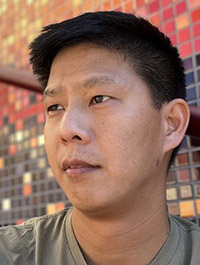 Kit Myers, a faculty member in the Department of History & Critical Race and Ethnic Studies , analyzed the adoption of Asian, Black and Native American children by White families for “The Violence of Love: Race, Family, and Adoption in the United States” (University of California Press). In the book, Myers says race has been positioned to mark certain homes, families and nations as better sources than others for love, freedom and positive futures for the adoptees.
Kit Myers, a faculty member in the Department of History & Critical Race and Ethnic Studies , analyzed the adoption of Asian, Black and Native American children by White families for “The Violence of Love: Race, Family, and Adoption in the United States” (University of California Press). In the book, Myers says race has been positioned to mark certain homes, families and nations as better sources than others for love, freedom and positive futures for the adoptees.
The word “violence” refers not only to physical harm but also to forms of erasure and displacement in transnational or transracial adoptions. For example, the process of forming a new family can require removing or obscuring elements of the adoptee's history. These erasures are potentially traumatic, even when done with the perceived positive intention of creating new family bonds.
“The Violence of Love” confronts this discomforting reality and rethinks theories of family to offer more extensive understandings of love, kinship and care.
Myers, a professor at UC Mered since 2016, said his book relates to broader research interests on the study of race as a social, relational and intersectional category of difference and power.
Myers will host a talk about “The Violence of Love” from 10:30 a.m. to noon Wednesday, Feb. 5, in Room KL 232 at the UC Merced Library. Seats are limited so registration is encouraged. Light refreshments will be available. There also will be a giveaway of a few copies of the book.

A Braitenberg vehicle travels the realms of science. Sometimes it’s real, sometimes it’s not. Either way, its simple designs help researchers see how an agent’s interaction with its environment can produce complex, seemingly intelligent behavior such as love, hate and desire. Such ideas are the backbones of artificial intelligence, cognitive science and robotics.
Forty years after Valentino Braitenberg dreamed up these little machines, UC Merced philosophy Professor Jeff Yoshimi and research scientist Scott Hotton have co-authored a book that confirms and expands on the Italian neuroscientist’s ideas.
“The Open Dynamics of Braitenberg Vehicles” (The MIT Press), published in June, is a book 10 years in the making. It’s the result of a longtime collaboration between Yoshimi and Hatton, whom the former describes as a “beautiful mind” mathematician. The book expands on Braitenberg’s brief 1984 introduction to the devices — a slim 32 pages — and unpacks their possibilities.
“We did the math and confirmed and expanded his ideas, showing in 250 pages all the possible meandering and spiraling and other patterns these vehicles can produce, in rigorous detail,” said Yoshimi, a member of the Department of Cognitive and Information Sciences .
The classic Braitenberg vehicle has sensors that detect things such as light, temperature and sound, and motors that are connected to the sensors in a certain way. This creates rules of behavior such as “aggression” (i.e., moving faster toward a light source, as if it were attacking) or “fear” (moving away from the light, as if it were avoiding it).
The book’s title refers to open dynamic systems, which interact with and are affected by their environment. Braitenberg vehicles fit the description because they aren’t pre-programmed but behave based on their environment and internal setup.
Yoshimi and Hotton also delve into embodied cognitive science — the idea that cognition isn’t just something that happens in the mind, but also stems from the interactions between an organism’s body, its environment and its actions in that environment.
This exploration in the book taps into Yoshimi’s expertise in philosophy. It follows theories that challenge traditional ideas of mind and intelligence, suggesting intelligent behavior can emerge from simple interactions.

Public Health fifth-year Ph.D. candidate Kesia Garibay has a new first-authored article titled, “Examining the Role and Strategies of Advocacy Coalitions in California’s Statewide Sugar-Sweetened Beverage Tax Debate (2001-2018).” Her research interests include the impact of health policy on underserved communities and understanding how policy addresses health disparities. She is currently working with Professor Nancy Burke in the Health Equity Research (HER) Lab in understanding the perspective of parents from the Central Valley in vaccinating their children.

Political Science lecturer Cameron Dehart's research on the political representation of Native Americans was published in the journal State Politics & Policy Quarterly. Dehart and co-author Elliot Mamet (of Duke) studied the representation of Native American tribes in the Maine state legislature and the findings have important implications for the representation of minority groups across the United States, in both national and state government.
The article was published online and is available here: https://www.cambridge.org/core/journals/state-politics-and-policy-quarte...

English Literature Professor Katherine Steele Brokaw published a book titled, "Shakespeare and Community Performance."
This book explores how productions of Shakespearean plays create meaning in specific communities, with special attention to issues of access, adaptation, and activism. Instead of focusing on large professional companies, it analyzes performances put on by community theatres and grassroots companies, and in applied drama projects. It looks at Shakespearean productions created by marginalized populations in Greater London, Harlem, and Los Angeles, a "Hamlet" staged in the remote Faroe Islands, and eco-theatre made in California’s Yosemite National Park. The book investigates why different communities perform Shakespeare, and what challenges, opportunities, and triumphs accompany the processes of theatrical production for both the artists and the communities in which they are embedded.

Professor Nicosia Shakes' book, "Women’s Activist Theatre in Jamaica and South Africa: Gender, Race, and Performance Space," was published by University of Illinois Press. Concentrating on four performance events, Shakes situates the work of theater groups and projects within a trajectory of women-led social justice movements established in Jamaica, South Africa, and globally from the early 2000s to the present.

Sociology Professor Paul Almeida and Sacramento State Professor Amalia Pérez Martín (UC Merced '22) published a new book in Spanish titled "Resistencia Colectiva al Neoliberalismo," translated to "Collective Resistance to Neoliberalism." The book highlights several dimensions of civic opposition to the implementation of free market policies, including: forms of neoliberalism; geographic distribution of protest events across world regions and time; and outcomes of movement campaigns.

Electrical Engineering and Computer Science Professor Xiaoyi Lu and co-authors Professor Dhabaleswar K. Panda from the Ohio State University and Dipti Shankar, a former UC Merced Ph.D. student working at SAP in Germany, have published a book titled "High-Performance Big Data Computing.” The book, published by MIT Press, offers an in-depth overview of high-performance big data computing and the associated technical issues, approaches and solutions.
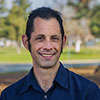
The atmosphere across much of the U.S. is demanding a greater share of water than it used to, according to a new study by a team including Professor John Abatzoglou from UC Merced, the Desert Research Institute and Scripps Institution of Oceanography at UC San Diego. The study, published in the Journal of Hydrometeorology, looked at data from the past 40 years related to evaporative demand, a measure of the potential loss of water from the Earth’s surface to the atmosphere.
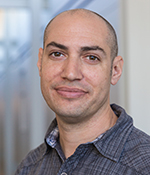 Much of online conversation today consists of signaling one’s political identity. When communicating in mixed groups, do people use "covert" signals that are recognizable by their own political in-group but easy for outsiders to miss?
Much of online conversation today consists of signaling one’s political identity. When communicating in mixed groups, do people use "covert" signals that are recognizable by their own political in-group but easy for outsiders to miss?
Cognitive and Information Sciences Professor Paul Smaldino answered this question in a paper published today in the Proceedings of the National Academy of Sciences. Smaldino developed a mathematical theory of covert signaling and, working with a team of collaborators, confirmed the model's predictions using a large sample of tweets. Read more
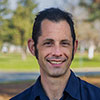 School of Engineering Professor John Abatzoglou and colleagues recently published a paper in Nature Climate Change describing their study of changes in extreme fire weather across global lands over the past four decades. "Observed Increases in Extreme Fire Weather Driven by Atmospheric Humidity and Temperature" details the researchers’ findings that fire weather extremes have significantly intensified over a quarter to half of global lands, primarily driven by a warming climate and decreases in relative humidity. The results show that increased fire weather extremes in the western U.S. are not isolated, but part of a global phenomenon.
School of Engineering Professor John Abatzoglou and colleagues recently published a paper in Nature Climate Change describing their study of changes in extreme fire weather across global lands over the past four decades. "Observed Increases in Extreme Fire Weather Driven by Atmospheric Humidity and Temperature" details the researchers’ findings that fire weather extremes have significantly intensified over a quarter to half of global lands, primarily driven by a warming climate and decreases in relative humidity. The results show that increased fire weather extremes in the western U.S. are not isolated, but part of a global phenomenon.

Cognitive and Information Sciences Professor Paul Smaldino is part of a team of researchers whose study titled "Psychologists update their beliefs about effect sizes after replication studies" was recently published in Nature Human Behaviour. The research focused on whether psychologists were able to predict how they would update their confidence in a result based on successful or unsuccessful replications; and whether they behaved as predicted by a model that relied solely on information from these studies to update their beliefs.
The study showed psychologists did change their minds in the proper direction, and they were also good at predicting how their beliefs would change in light of evidence. Importantly, the degree to which psychologists updated their beliefs was not affected by whether or not the results turned out differently than they expected. These results give hope that behavioral scientists may be less influenced by motivated reasoning than sometimes feared and are able to rely rationally on an accumulated body of evidence to learn true aspects of human behavior.
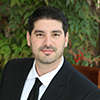
Director of the UC Center of Excellence on Unmanned Aircraft System Safety Brandon Stark and an undergraduate researcher will be supporting the assessment of safety and policy for a new California Department of Transportation (Caltrans) project. A multi-UC endeavor, Stark and his colleagues will study advanced air mobility vehicles, or what one might think of as futuristic flying cars. The project will involve developing a simulation of a futuristic air traffic network and designing analysis tools to study impacts to society. This work is part of the CITRIS Aviation program across several UC CITRIS campuses.
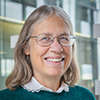
Professor Sarah Kurtz has a new publication in Joule titled “Cross-sector Storage and Modeling Needed for Deep Decarbonization.” Funded by the California Energy Commission and performed in conjunction with the University of North Carolina, Chapel Hill, this paper discusses the importance of modeling the total energy system including how wind and solar electricity can be used to generate hydrogen that, in turn, is used in other energy sectors. This macro approach, rather than focusing on electricity only, stimulates innovation to identify cross-sector options to achieve energy system decarbonization.

Anthropology Professor Robin Maria DeLugan has published a new book titled "Remembering Violence: How Nations Grapple With Their Difficult Pasts." The book examines how commemorations of 1930s violence in El Salvador, Spain and the Dominican Republic bring attention to 20th century dictatorship and authoritarianism. DeLugan argues that the focus on historical memory is an attempt to confront and also transform the meaning of national belonging.
DeLugan will discuss the case studies, as well as the lessons that may apply to the Central Valley and the United States, during a virtual event on Thursday, June 3, at 6 p.m. People can register for the free event online.

Materials Science and Engineering Professor Jennifer Lu is part of a team of researchers whose work on porous carbon aerogels could power future missions to Mars. Building upon her previous work, Lu took the lead with her colleagues at Merced nAnomaterials Center for Energy and Sensing (MACES), UC Merced, UC Santa Cruz and Lawrence Livermore National Laboratory to show how porous carbon aerogels can compose electrodes of a supercapacitor — a device that can operate at extremely cold temperatures, similar to the conditions on Mars. Find out more about Lu’s work in Physics World.
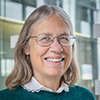
Materials Science and Engineering Professor Sarah Kurtz was invited to write an article for the 50th anniversary edition of the National Academy of Engineer’s (NAE) quarterly magazine The Bridge. In 2020, Kurtz was the first faculty member on campus elected to the NAE for her contributions to the development of gallium indium phosphide/gallium arsenide photovoltaic cells and for her leadership in solar-cell reliability and quality. Read her article for The Bridge titled “Accelerating Growth of Solar Energy” here.
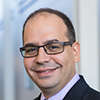
Civil and Environmental Engineering Professor Josué Medellín-Azuara is part of an international team of researchers who conducted a systems analysis on water security in Jordan the findings of which were published in Proceedings of the National Academy of Science. The paper, titled “A Coupled Human-Natural System Analysis of Freshwater Security Under Climate and Population Change” examines Jordan’s water crisis due to increased water use, population growth, climate change and other factors. The study finds that in the absence of demand management and supply interventions, and major reforms in the water sector, nearly 90 percent of the lower income population water security is under threat.

Cognitive Science Professor Michael Spivey has published a new book titled, “Who You Are: The Science of Connectedness,” which is forthcoming from MIT Press.
Who are you? Are you just a brain? A brain and a body? All the things you have done and the friends you have made? Many of us assume that who we really are is something deep inside us, an inner sanctuary that contains our true selves. In “Who You Are,” Spivey argues that the opposite is true: that you are more than a brain, more than a brain-and-body, and more than all your assumptions about who you are. Rather than peeling layers away to reveal the inner you, Spivey traces who you are outward. You may already feel in your heart that something outside your body is actually part of you — a child, a place, a favorite book. Spivey confirms this intuition with scientific findings.

Materials Science and Engineering Professor Beth Nowadnick has published a new paper in Physical Review B in which she examines how to control the structure and properties of the quantum material SmBaMn2O6. Nowadnick’s work explores how the crystal structure, or how atoms are arranged, is closely connected to the electronic and magnetic properties of this material, and shows how to stabilize competing ferromagnetic and ferroelectric states, which may have application in next generation low-power computer memory.

Materials Science and Engineering Professor Beth Nowadnick has published a new paper in Nature Communications that explores the nanoscale structure of domain walls in ferroelectric materials. Nowadnick’s research, conducted in collaboration with researchers at the University of Tennessee, the Lawrence Berkeley National Lab, Cornell University, and Rutgers, uses an infrared nano-spectroscopy technique together with theoretical modelling to reveal the nanoscale vibrational properties of a domain wall in a recently discovered ferroelectric Ca3Ti2O7. This work advances fundamental scientific understanding of the nanoscale structure of domain walls, which have the potential to be used in ultra-low power memory and logic devices.

UC Merced professor Ignacio Lopez-Calvo, Presidential Chair in the Humanities and Professor of Latin American Literature, has published a new book titled "Japanese-Brazilian Saudades Diasporic Identities and Cultural Production." The book explores the complex creation of Japanese-Brazilian identities and the history of immigration, showing how the community has used writing as a form of reconciliation and affirmation of their competing identities.

Professor Ignacio Lopez-Calvo and Christina Lux, the associate director for UC Merced Center for the Humanities, co-edited a book titled "The Humanities in the Age of Information and Post-Truth," available in paperback now. The essays collected in the book represent a defense of the social function of the humanities in today's society.

Professor Nancy Burke co-edited a new book entitled "Negotiating Structural Vulnerability in Cancer Control," which explores the importance of case studies about lived experiences of cancer in the concept of structural vulnerability and whether a consideration of structural vulnerability can enhance applied anthropological work in cancer prevention and control. The book is published by the University of New Mexico Press.

School of Natural Sciences Professor Jennifer Manilay and three graduate students wrote an invited review published in the National Institutes of Health’s PubMed addressing current ideas about how changes in bone health could also affect immune system cells’ health. For example, therapies to osteoporosis might also have unintended consequences for antibody-producing B cells and natural killer cells.

School of Natural Sciences Professor Hrant Hratchian and colleagues published a paper in the Journal of Physical Chemistry exploring the structures of the CeB6 molecule.

School of Natural Sciences Professor Jennifer Manilay and the students in her lab published a paper in the Journal of Immuonology revealing that the gene Sostdc1 is responsible for the growth and effectiveness of natural killer (NK) cells, which target cancerous tumors and virally infected cells.

School of Engineering Professor Changqing Li and graduate student Michael C. Lun published a paper in the journal of Multimodal Biomedical Imaging detailing their development of a new X-ray luminescence computed tomography system that can obtain better images of what’s happening inside deep tissues.

Professor Nancy Burke has a recent paper discussing the whys behind the efficacy of using lay health workers to help manage patients' chronic health conditions, published in PubMed, a journal by the U.S. National Library of Medicine and the National Institutes of Health.